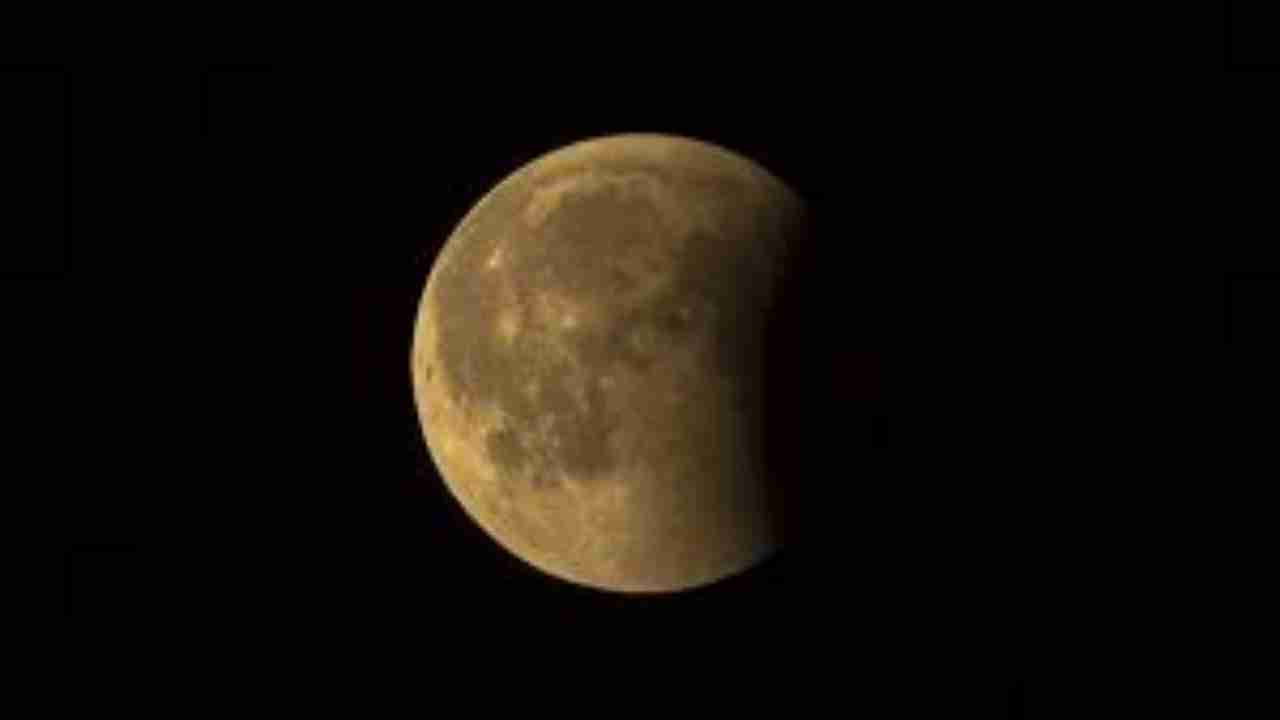Gadgets
Days getting longer as moon moves farther, slowing earth’s rotation

Days on Earth are getting longer as the moon slowly moves farther away from us, new research shows.
According to the new study was published Monday (June 4) in the journal Proceedings of the National Academy of Sciences, a day on Earth lasted only 18 hours about 1.4 billion years ago.
Scientists believe that when Earth and the moon were barely formed some 4.5 billion years ago, days were only five hours long.
As the moon slowly drifts away from Earth, its influence on our planet’s spin around its axis is waning, thereby making days last longer, said a report on science new portal ZME Science.
“As the moon moves away, the Earth is like a spinning figure skater who slows down as they stretch their arms out,” explains Stephen Meyers, professor of geoscience at the University of Wisconsin-Madison and co-author of the new study published in the Proceedings of the National Academy of Sciences.
The moon is about 4.5 billion years old and is some 239,000 miles (385,000 kilometers) away from Earth, on average. However, due to tidal forces between our planet and the moon, the natural satellite slowly spirals away from Earth at a rate of 3.78cm (1.48in) per year, or at about the same speed at which our fingernails grow. The migration of the Moon away from the Earth is mainly due to the action of the Earth’s tides.
Without the moon, Earth could slow down enough to become unstable, but this would take billions of years and it may never happen at all.
The slowing of earth’s rotation and lengthening of days as the satellite drifted farther away is traceable in the fossil records of some creatures. For instance, the daily growth bands of corals record the number of days that occurred per year in ancient times. By one estimate, days are getting longer at a rate of 19 hours every 4.5 bn years.
Now, using a new method, called astrochronology, Meyers and colleagues were able to devise a novel way to calculate the moon’s influence on the days on Earth. Astrochronology combines astronomical theory with geological observation, allowing researchers to reconstruct the history of the solar system and better understand ancient climate change as captured in the rock record, according to a statement from the University of Wisconsin-Madison, reported Space.com.
“One of our ambitions was to use astrochronology to tell time in the most distant past, to develop very ancient geological time scales. We want to be able to study rocks that are billions of years old in a way that is comparable to how we study modern geologic processes,” said study co-author Stephen Meyers, a professor of geoscience at UW-Madison, in the statement.
The moon and other bodies in the solar system largely influence Earth’s rotation, creating orbital variations called Milankovitch cycles. These variations ultimately determine where sunlight is distributed on Earth, based on the planet’s rotation and tilt.
Earth’s climate rhythms are captured in the rock record, going back hundreds of millions of years. However, regarding our planet’s ancient past, which spans billions of years, this geological record is fairly limited, researchers said in the statement.
This can lead to some uncertainty and confusion. For example, the current rate at which the moon is moving away from Earth suggests that “beyond about 1.5 billion years ago, the moon would have been close enough that its gravitational interactions with the Earth would have ripped the moon apart,” Meyers said.
Using their new statistical method, the researchers were able to compensate for the uncertainty across time. This approach was tested on two stratigraphic rock layers: The 1.4-billion-year-old Xiamaling Formation from northern China and a 55-million-year-old record from Walvis Ridge, in the southern Atlantic Ocean.
Examining the geologic record captured in the rock layers and integrating the measure of uncertainty revealed changes in Earth’s rotation, orbit and distance from the moon throughout history, as well as how the length of day on Earth has steadily increased.
“The geologic record is an astronomical observatory for the early solar system,” Meyers said in the statement. “We are looking at its pulsing rhythm, preserved in the rock and the history of life.”
The new study was published Monday (June 4) in the journal Proceedings of the National Academy of Sciences.
Gadgets
WhatsApp to introduce Native File Sharing feature similar to Apple’s AirDrop
Users can choose to be visible to others without disclosing their phone numbers to people who are not their contacts.

A Meta-owned messaging platform, WhatsApp is all set to introduce a new feature that allows Android users to share files with another user nearby. According to reports, the feature will be developed similar to Apple’s AirDrop.
The file sharing feature nearby is not currently available for beta testers. However, according to a report from WhatsApp feature tracker WABetaInfo, it seems that the feature will soon be introduced. The report reveals a screenshot that shows an option within the app stating, to share files with people nearby, along with a list of nearby users.
It is interesting to note that users can choose to be visible to others without disclosing their phone numbers to people who are not their contacts. In order to share files with other users, one needs to wait for nearby users to accept their request. The process involves a unique interaction, where nearby users can shake their device to receive incoming share requests. It is important to note that this feature is designed with end-to-end encryption to ensure user privacy.
In the upcoming update, WhatsApp is expected to introduce a nearby file-sharing feature. However, the current beta version for Android, which is 2.24.2.20, has addressed a camera issue. Some Android beta testers have reported difficulties in launching the camera within the app after the 2.24.2.13 update. Upon launching, users were presented with an error message that said, can’t start camera, please restart your device. This issue persisted even after restarting the device or relaunching the app.
The latest beta update of WhatsApp, located at 2.24.2.20, has fixed the camera bug. This allows users to launch the camera within the app and share photos and videos with their contacts without any interruptions. As WhatsApp continues its efforts to improve its features and address bugs, users can expect a better messaging experience on the platform.
Gadgets
Meesho mega blockbuster sale: E-commerce platform to offer 80 percent discount on electronics
The e-commerce platform’s first mega blockbuster sale will sell more than 400 brands directly with the help of authorised partners on its digital store called Meesho Mall.

Ahead of the festive season, e-commerce platform Meesho’s mega blockbuster sale is starting on Friday, October 6, 2023. The platform will provide a massive discount of up to 80 percent on different categories such as essentials, accessories, electronics, footwear, etc.
The blockbuster sale is scheduled to conclude on October 13, 2023. Notably, the Softbank backed e-commerce platform is starting its festive sale a day before Flipkart or Amazon’s festive sale goes live. The e-commerce platform’s first mega blockbuster sale will sell more than 400 brands directly with the help of authorised partners on its digital store called Meesho Mall.
Reportedly, the platform also added over 50 lakh new customers during these sales. More than 75 percent of the demand was received from Tier-II cities, including Amravati, Aurangabad, Dehradun, Nellore, Solapur, and Warangal. The platform further claimed that they have added more than 2 lakh sellers in the past two years.
Recently, Meesho affirmed that they have received over 10 million (approx) from its pre-festive sales during Onam, Raksha Bandhan, and Ganesh Chaturthi. The platform has more than 14 lakh sellers, selling approx 12 crore products in 30 different categories.
In an effort to increase the seller base, the company announced the onboarding of non-GST sellers on the platform earlier this week. The GST council announced to permit the e-commerce platform to onboard sellers with turnover of up to Rs 40 lakh.
Prior to Meesho’s Mega Blockbuster Sale, the company introduced a loyalty programme during which eligible users will earn Smart Coins, which the user can redeem every time they make the purchase of any products on the platform.
As per Redseer, over 140 million shoppers are likely to make purchases during the festive season. This will enhance the Gross Merchandise Value (GMV) of the Indian e-commerce sector by 18 to 20 per cent and may touch Rs 90,000 crore as compared to Rs 76,000 crore last year.
Phones & gadgets
Apple launches iPhone 15 series, India price, features, availability
The iPhone 15 series will be available in India from September 22 but iPhone lovers can also pre-order, starting from September 15 onwards.

Apple launched its most anticipated iPhone 15 series, including the iPhone 15, iPhone 15 Plus, iPhone 15 Pro and iPhone 15 Pro Max during the Wonderlust event globally on September 12 night.
The iPhone 15 series will be available in India from September 22 but iPhone lovers can also pre-order, starting from September 15 onwards.
People can buy a new iPhone 15 or upgrade it to the old one. There are five colours available for the people.
According to reports, Apple has been manufacturing the iPhone 15 series in India and China. Apple has moved 7% of its iPhone production to India. Previously, India was not making the newest models. The Centre’s production-linked incentive (PLI) scheme for smartphones played a part in Apple moving its production to India.
The new iPhone 15 has been launched with the same starting price as its prototype, the iPhone 14. The 128GB variant is priced at Rs 79,900, while the 256GB variant costs Rs 89,900. For people who need more storage, the 512GB variant is available for Rs 1,09,900.
This latest iPhone series puffs a 6.1-inch display and comes in five different colours which are pink, yellow, green, blue, and black. While the design remains the same as the previous models, the iPhone 15 features a dynamic island notch instead of the usual notch, which was highly popular among the iPhone 14 Pro phones.
The camera part of the iPhone series has undergone significant upgrades, the new iPhone 15, with an enhanced 48-megapixel primary sensor replaces the 12-megapixel dual camera system which was available in the previous iPhone 14. This significant improvement promises better low-light photography and portrait shots.
The tech giant announced that the iPhone 15 has an all-day battery life, making it more convenient for users to go about their daily activities without worrying about their phone’s battery.
The iPhone 15 Pro models feature a lighter body and thinner bezels. The new AirPods Pro with USB-C charging case will support Lossless Audio with Apple Vision Pro.
Additionally, the iPhone 15 is powered by Apple’s A16 bionic processor, an upgrade from the A15 bionic chipset used in the previous iPhone 14 and iPhone 14 Plus models. The Pro models had the faster and better A16 chip, but now this feature is available in all iPhone 15 models.
The USB-C port on the standard iPhone 15 and iPhone 15 Plus remain limited to lightning speeds up to 480 Mbps. The iPhone 15 Pro and iPhone 15 Pro Max support USB 3 speeds up to 10 Gbps. People will need to buy a separate 1-meter Thunderbolt 4 Pro cable for Rs 5,724 or Rs 10,701 for the 1.8-meter cable to support faster speeds.
The dynamic island notch feature, which can adjust its size according to notifications, was widely discussed before the launch of the iPhone 15. This unique feature can now be available in all models of the phone.
Another important feature of the iPhone 15 is the shift to the USB Type C charging port. Apple has abandoned the lightning port in favour of the more commonly used USB Type C charging port. This means, there is no longer a need for a special iPhone charging cable to be carried around everywhere you go.
-

 Entertainment23 hours ago
Entertainment23 hours agoManisha Koirala reveals reason for rejecting Dil To Pagal Hai, says regrets that decision
-

 2024 Lok Sabha Elections22 hours ago
2024 Lok Sabha Elections22 hours agoPM Modi says Congress leaders consider themselves above Lord Ram
-

 Trending23 hours ago
Trending23 hours agoDolly Chaiwala sips coffee atop Burj Khalifa, video goes viral
-

 Trending22 hours ago
Trending22 hours agoNexon owner replaces broken side mirror with a plastic mirror, social media users say epic moment
-

 2024 Lok Sabha Elections4 hours ago
2024 Lok Sabha Elections4 hours agoRahul Gandhi clarifies on wealth survey remark, says aim is to identify injustice
-

 Cricket news5 hours ago
Cricket news5 hours agoIPL 2024: Marcus Stoinis hits first IPL century as Lucknow Super Giants beat Chennai Super Kings by 6 wickets
-

 Trending2 hours ago
Trending2 hours agoA waiter’s life: Social media users go emotional on watching viral video
-

 India News3 hours ago
India News3 hours agoRamdev, Balkrishna publish bigger apology in newspapers after Supreme Court’s rap













